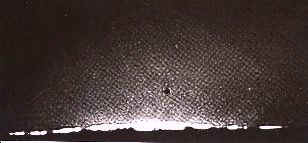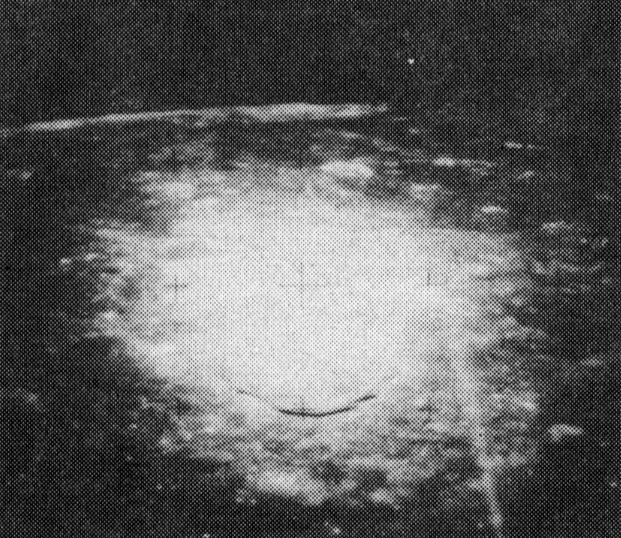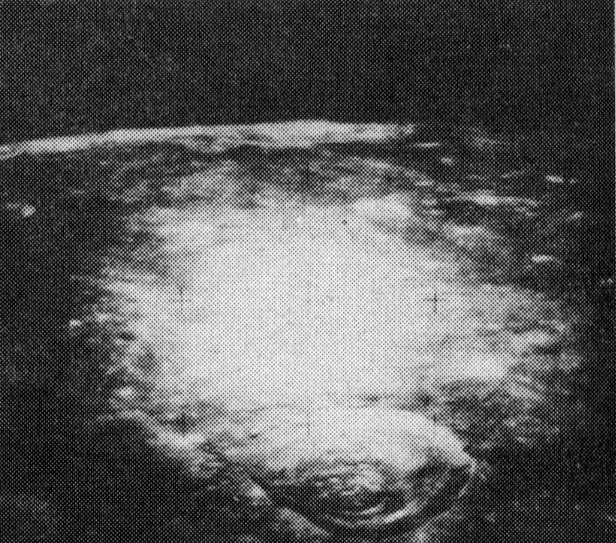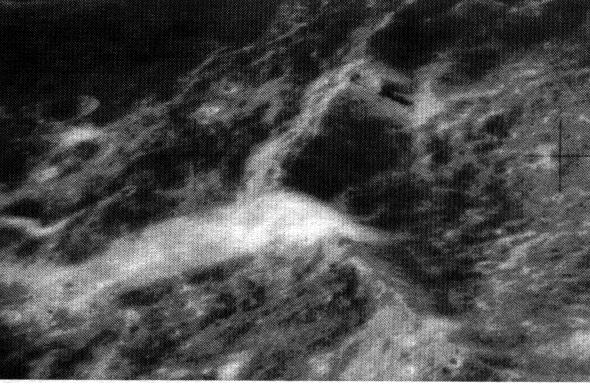 An
Excerpt from UFOs and the Complete Evidence from Space by Daniel Ross-
An
Excerpt from UFOs and the Complete Evidence from Space by Daniel Ross- An
Excerpt from UFOs and the Complete Evidence from Space by Daniel Ross-
An
Excerpt from UFOs and the Complete Evidence from Space by Daniel Ross-" A detailed look at some of NASA’s color photographs provides evidence of the Moon’s atmosphere. In their official publication, “Apollo 8- Man Around the Moon “ are three color photographs which confirm the presense of a dense atmosphere. Along the entire visible rim of the Moon, as seen and photographed from space by the Apollo 8 astronauts, there is a substantial brightness of the limb- and effect that can only be attributed to a gaseous layer around the Moon. Mars, Venus, and the Earth all present this same limb brightening due to their atmospheres.
On page 12 of the Apollo 8 booklet is a space photograph of Earth, showing the Earth's own limb brightness. On page 14
of the same booklet is a full picture of the Moon, taken by the astronauts from interplanetary space, and it shows an
identical limb brightening along the rim. Firsoff points out
that both of the space photographs of the Earth and the Moon were taken on the same film with the same camera, and
since we accept that there is an atmospheric blanket around our planet, it would be quite illogical to deny the same such
reality behind the same limb brightening in the case of the
Moon.
Both the Orbiter probes and Apollo missions photographed the faint haze of light spreading out over the lunar horizon just prior to sunrise, and the soft illumination of lunar twilight after the Sun dipped below the Moon's limb. These effects require an atmosphere. Oblique pictures, such as Plate 17, clearly show soft gray shadows made by an evening sun on the lunar far side. Yet astronomers believing in an airless Moon have always insisted that all lunar shadows are pitch black.
...
Both Jessup's The Expanding Case for the UFO and Firsoffs Strange World of the Moon are difficult to find. The latter is even difficult to read, unless you have an exceptional interest in geology, astronomy, and technical science. But a study of these two books would readily prove, that years later, NASA cleverly concealed the truth about the Moon's environment. In the final analysis, NASA only proved one thing for mankind - that it was technologically possible for a spaceship to get to the Moon and back. A technological success for man, but a formidable cover-up for mankind.
Formidable means difficult to surmount. Today it is unlikely that even one person in a thousand believes that there could be life on the Moon. Yet it is there. It has always been there. The government knew it back in the 1950's, with the secret observatory studies. Also, there is an atmosphere which moderates the climate and temperature in certain regions, and one of sufficient density to support vegetation. It is time to re-examine the early evidence of selenography.
The Moon has its own unique time cycle. In 29.5 of our days, it has essentially gone through a full season. Any longitudinal area will have had about 14 continuous days of sunlight (timed by our clocks) as the sun rises and sets, followed by another 14 days of night darkness. Since the Moon's axis is nearly perpendicular to the plane of the ecliptic, there are no different seasons, (no winter or summer), only a monthly cycle.
The late Harvard professor W. H. Pickering photographed the effects of an atmosphere during lunar occultations of Jupiter and Saturn. An occultation refers to the temporary disappearance of a celestial body as it passes behind a closer planet or moon. Separately, when the planets were at the line of contact with the limb of the Moon and partly covered, Pickering's negatives showed a clear, unmistakable dark band crossing the disks of Jupiter and Saturn that measured 3 seconds of arc wide. In other words, the Moon's atmosphere extends 3 miles above its surface with sufficient density to provide a photographic effect. This observation was also made by the expert selenographers, Barnard and Douglas.
The Moon is a much smaller celestial body than Venus; its volume is less than 3% of the size of our sister planet. Therefore, the total volume of atmosphere would be very reduced for the Moon. However, the actual density near the surface could be comparatively high. Beyond an altitude of 3 miles the atmospheric density around the Moon appears to diminish rapidly, whereas on Venus the atmospheric range is known to be many times more extensive. The air density 4 miles above the Moon's surface might be equivalent to the air density 40 miles above the Venusian surface. Our present day theories are inadequate to explain the phenomena. The case for each and every celestial body is dependent on its mass, volume, and actual surface gravity. Since it will be shown that the Moon's gravity is 3 to 4 times higher than what has been commonly accepted, there is no simple model or formula to predict each case. And until gravity is absolutely understood, along with its precise relationship to a planet's size and mass, it will not be possible to explain one atmospheric situation in terms of another. To put it plainly, even if the surface air density is known, it cannot be predicted what the atmospheric range and corresponding altitude density would be, until the intricate relationship of gravity to that celestial body is known.
Why is this important? Astronomers have always insisted that the question of lunar atmosphere can be answered by the way in which stars are "occulted" by the Moon. Since stars passing behind the rim of the Moon appear to snap out instantaneously, astronomers readily conclude that there must not be an atmosphere there. If there was a gaseous layer, they say that the effect should be as obvious as the case of a star occultation by Venus, where the extensive atmosphere makes the star appear to flicker and fade briefly before disappearing behind the rim of the planet. But Venus' atmosphere is much denser, and the planet's size too massive, to compare the effects.
William Brian, a recent Moon researcher, suggests that a lunar atmosphere would be very clean, due to the lack of high winds and other weather conditions. Since the lunar atmosphere would not generally be carrying dust and water vapor by surface winds, he points out that light diffusion and scattering effects would be minimal. Therefore, the occultation of stars would not be as pronounced, even if the Moon possessed a dense atmosphere.
Firsoff writes in his book that he observed the occultation of two stars in March 1957 while using a 6.5-inch reflector. Neither star 'snapped out' at contact with the rim of the Moon, but dimmed rapidly, then flickered brilliantly, before dimming again and finally disappearing. At the time of observation the Moon was a narrow crescent 2.5 days after the New Moon, and Firsoff stated that the effect could not be seen at a fuller phase, probably due to the background glare of the moonlit sky. Since we are dealing with different conditions for the Moon, the observational results do not come as easily as observing the Venusian atmosphere effects. This instance seemed to be an excellent combination of timing, seeing conditions, and most importantly - professional objectivity.
Indeed, Firsoff wrote that the observation was a clear and unmistakable confirmation of a lunar atmosphere - that there is a gaseous layer, low over the surface of the Moon. To this statement can be added the evidence provided from a study by the American Association of Lunar and Planetary Observers. This group of independent astronomers catalogued dozens of observations of faint meteors flashing near the Moon's surface. An atmosphere around the Moon provided sufficient friction for these meteors to become incandescent to earthbound observers.
Firsoff also recorded that he observed an auroral streamer near the southern pole of the Moon in May 1955. His telescopic view showed a dancing and sparkling glow, from which a faint beam of light suddenly detached and shot up vertically into the lunar sky. As it ascended the beam became more intense, while fading out at the base, and finally disappearing. The length of the beam was estimated to be nearly 100 miles, and the auroral display reminded him of the colorful northern lights he had seen in Scotland, an effect that certainly requires an atmosphere.
The lunar atmosphere could be tenuous and still account for these various observations mentioned, as Firsoff pointed out. He took a cautious approach at the time, which was probably reasonable, due to the accepted gravitational theories of the day. However, other discoveries suggested that basic assumptions about the Moon could be fundamentally wrong, and that the strange lunar world might have many surprises in store for us.
On July 22, 1954, Firsoff telescopically viewed the sunset on the Moon's Apennines, a prominent mountain range bordering the Mare Imbrium. Using different filters for comparison, he proved to himself that sunset on the Moon was really red, an effect that other astronomers had also observed. This was amazing to Firsoff, (he even called it thrilling), for the reddening clearly indicated the presence of a gaseous layer over the Moon containing water and carbon dioxide molecules.
For the Sun's light to become reddened, it has to pass through a layer of gas of sufficient density. Noting that this is quite conspicuous at sunrise and sunset on Earth, Firsoff explained that the Moon's atmosphere shows the same positive reaction to sunlight at the end of its day. This meant that the lunar air was dense enough to hold water and C02 molecules.
Immediately following sunset, is twilight. There is a small time interval before dark which we call twilight, when our atmosphere is illuminated by the sun which has dropped below the horizon. Without an atmosphere, there would be no period of twilight. As soon as the sun dipped below the horizon, it would be totally dark
(nighttime)."

He identifies them as Apollo 14 images, numbers 14-10279 and 14-10280. He rightly interprets the picture as depicting a cloud or mist which moved out of the crater. Note that the mist stayed together without dispersing, and moved across the lunar surface.

Finally, image number 16-758, from Apollo 16, shows a long cloud
fingering its way through a mountainous, crater rim, through some pass or low
point. (Below)
"Also notice the large oval object on the crater edge casting a shadow."
Fred Steckling
